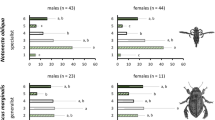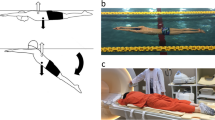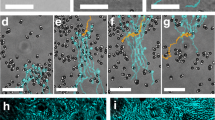Underwater backswimmers use their haemoglobin to help them stay stationary while waiting for prey.
Abstract
Backswimmers (Notonectidae) are common diving insects found around the world that exploit the mid-water zone for predation — they breathe by using an air bubble collected at the surface. Here we show that backswimmers achieve prolonged periods of neutral buoyancy by using oxygen stored in their haemoglobin to stabilize the volume of the bubble as they breathe from it. This enables them to maintain their position in the water column without continually swimming.
This is a preview of subscription content, access via your institution
Access options
Subscribe to this journal
Receive 51 print issues and online access
$199.00 per year
only $3.90 per issue
Buy this article
- Purchase on SpringerLink
- Instant access to full article PDF
Prices may be subject to local taxes which are calculated during checkout

Similar content being viewed by others
References
Ege, R. Z. Allg. Physiol. 17, 81–125 (1915).
Thorpe, W. H. & Crisp, D. J. J. Exp. Biol. 24, 227–269 (1947).
Miller, P. L. J. Exp. Biol. 44, 529–543 (1966).
Bare, C. O. Univ. Kansas Sci. Bull. 18, 265–349 (1929).
Miller, P. L. Nature 201, 1052 (1964).
Wells, R. M. G., Hudson, M. J. & Brittain, T. J. Comp. Physiol. 142, 515–522 (1981).
Author information
Authors and Affiliations
Corresponding author
Ethics declarations
Competing interests
The authors declare no competing financial interests.
Supplementary information
Rights and permissions
About this article
Cite this article
Matthews, P., Seymour, R. Diving insects boost their buoyancy bubbles. Nature 441, 171 (2006). https://doi.org/10.1038/441171a
Received:
Accepted:
Published:
Issue date:
DOI: https://doi.org/10.1038/441171a
This article is cited by
-
Hydrophobic-hydrophilic crown-like structure enables aquatic insects to reside effectively beneath the water surface
Communications Biology (2021)
-
Floating of the lobes of mosquito (Aedes togoi) larva for respiration
Scientific Reports (2017)
-
Testes-specific hemoglobins in Drosophilaevolved by a combination of sub- and neofunctionalization after gene duplication
BMC Evolutionary Biology (2012)



